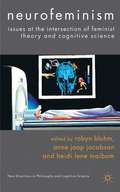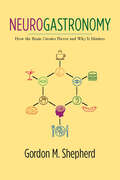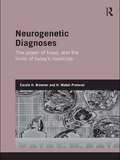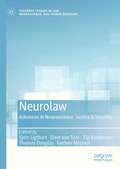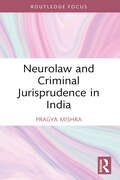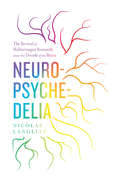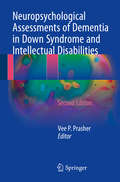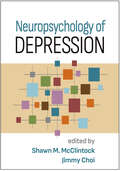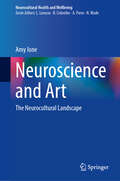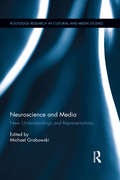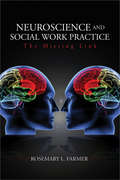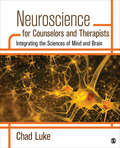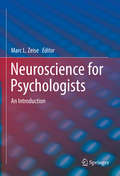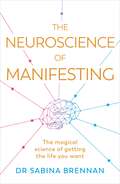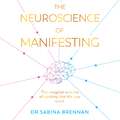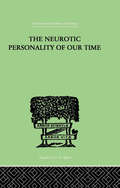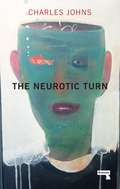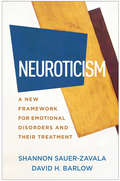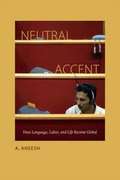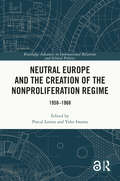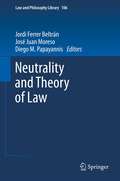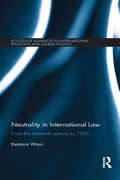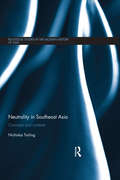- Table View
- List View
Neurofeminism
by Robyn Bluhm Anne Jaap Jacobson Heidi Lene MaibomGoing beyond the hype of recent fMRI 'findings', thisinterdisciplinary collection examines such questions as: Do women and men have significantly different brains? Do women empathize, while men systematize? Is there a 'feminine' ethics? What does brain research on intersex conditions tell us about sex and gender?
Neurogastronomy: How the Brain Creates Flavor and Why It Matters
by Gordon M. Shepherd&“A personal yet magisterial account of the new brain-based approach to flavor perception . . . [a] panoramic view of science, culture, and behavior.&”—Avery Gilbert, author of What the Nose Knows Leading neuroscientist Gordon M. Shepherd embarks on a paradigm-shifting trip through the &“human brain flavor system,&” laying the foundations for a new scientific field: neurogastronomy. Challenging the belief that the sense of smell diminished during human evolution, Shepherd argues that this sense, which constitutes the main component of flavor, is far more powerful and essential than previously believed. Shepherd begins Neurogastronomy with the mechanics of smell, particularly the way it stimulates the nose from the back of the mouth. As we eat, the brain conceptualizes smells as spatial patterns, and from these and the other senses it constructs the perception of flavor. Shepherd then considers the impact of the flavor system on contemporary social, behavioral, and medical issues. He analyzes flavor&’s engagement with the brain regions that control emotion, food preferences, and cravings, and he even devotes a section to food&’s role in drug addiction and, building on Marcel Proust&’s iconic tale of the madeleine, its ability to evoke deep memories. Shepherd connects his research to trends in nutrition, dieting, and obesity, especially the challenges that many face in eating healthily. He concludes with human perceptions of smell and flavor and their relationship to the neural basis of consciousness. Everyone from casual diners and ardent foodies to wine critics, chefs, scholars, and researchers will delight in Shepherd&’s fascinating, scientific-gastronomic adventures. &“Those who make the effort will be rewarded: they&’ll never look at eating the same way again.&”—Library Journal
Neurogenetic Diagnoses: The Power of Hope and the Limits of Today’s Medicine (Genetics and Society)
by Carole H. Browner Mabel H. PreloranAs world populations continue to age, the incidence of very common, ultimately fatal neurodegenerative diseases (some of medicine’s most puzzling illnesses) will increase exponentially. Neurogenetic Diagnoses, the Power of Hope, and the Limits of Today’s Medicine explores the diverse impacts and intense meanings of genetic diagnoses for patients suffering from such diseases, and for their family caregivers and clinicians. Through richly-textured, often heart-wrenching longitudinal case studies, Neurogenetic Diagnoses... reveals how extremely difficult it can be for patients to obtain a definitive diagnosis for the cause of their symptoms, even with genetic testing; how, with or without definitive diagnoses, patients and family caregivers strive to come to terms with their situations; and how they are aided (or not) in these endeavors by their doctors. The analysis is framed by increasingly sharp social debate over the consequences of decoding the human genome -- and the impact of genetic technology on our lives.
Neurolaw: Advances in Neuroscience, Justice & Security (Palgrave Studies in Law, Neuroscience, and Human Behavior)
by Gerben Meynen Sjors Ligthart Dave Van Toor Tijs Kooijmans Thomas DouglasThis edited book provides an in-depth examination of the implications of neuroscience for the criminal justice system. It draws together experts from across law, neuroscience, medicine, psychology, criminology, and ethics, and offers an important contribution to current debates at the intersection of these fields. It examines how neuroscience might contribute to fair and more effective criminal justice systems, and how neuroscientific insights and information can be integrated into criminal law in a way that respects fundamental rights and moral values.The book’s first part approaches these questions from a legal perspective, followed by ethical accounts in part two. Its authors address a wide range of topics and approaches: some more theoretical, like those regarding the foundations of punishment; others are more practical, like those concerning the use of brain scans in the courtroom. Together, they illustrate the thoroughly interdisciplinary nature of the debate, in which science, law and ethics are closely intertwined. It will appeal in particular to students and scholars of law, neuroscience, criminology, socio-legal studies and philosophy.Chapter 8 is available open access under a Creative Commons Attribution 4.0 International License via link.springer.com.
Neurolaw and Criminal Jurisprudence in India
by Pragya MishraThis work explores the transformative potential of neuroscience in reshaping India's criminal justice system. It deftly navigates the complex terrain of neurolaw, examining its implications for criminal responsibility, rehabilitation, and the very foundations of legal thought. Drawing on cutting-edge neuroscientific research and India's rich philosophical traditions, the work proposes innovative approaches to longstanding legal and ethical dilemmas. It covers a wide range of topics with depth and nuance, from a neurocriminological audit of Indian criminal codes to an exploration of neuroplasticity in offender rehabilitation. It includes a fascinating case study of the Vipassana meditation program in Indian prisons, illustrating the practical applications of neurolaw principles. The volume promises to spark crucial conversations about the nature of human behavior, the purpose of punishment, and the possibility of a more humane and effective justice system. It is a bold step toward a neuroscience-informed jurisprudence that honors both scientific truth and human dignity. At the intersection of neuroscience, law, and Indian philosophy, the work offers a unique perspective on some of the most pressing questions in modern jurisprudence. Representing a significant contribution to the global discourse on neurolaw and offering concrete suggestions for legal reform, judicial practice, and policymaking, it will be an essential read for legal scholars, neuroscientists, policymakers, and anyone interested in the future of criminal justice.
Neuropsychedelia
by Nicolas LanglitzNeuropsychedelia examines the revival of psychedelic science since the "Decade of the Brain." After the breakdown of this previously prospering area of psychopharmacology, and in the wake of clashes between counterculture and establishment in the late 1960s, a new generation of hallucinogen researchers used the hype around the neurosciences in the 1990s to bring psychedelics back into the mainstream of science and society. This book is based on anthropological fieldwork and philosophical reflections on life and work in two laboratories that have played key roles in this development: a human lab in Switzerland and an animal lab in California. It sheds light on the central transnational axis of the resurgence connecting American psychedelic culture with the home country of LSD. In the borderland of science and religion, Neuropsychedelia explores the tensions between the use of hallucinogens to model psychoses and to evoke spiritual experiences in laboratory settings. Its protagonists, including the anthropologist himself, struggle to find a place for the mystical under conditions of late-modern materialism.
Neuropsychological Assessments of Dementia in Down Syndrome and Intellectual Disabilities
by Vee P. PrasherUp to the early 1980s neuropsychological assessments of persons with intellectual disability (ID) usually meant an assessment for developmental delay, of intelligence (intelligence quotient testing) or of level of adaptive behavior. Popular tests included the Stanford-Binet, Wechsler Intelligence Scales, Bayley Scales of Infant Development, the Griffin Mental Developmental Scales, and the Vineland Social Maturity Scale. These were assessments of the "overall" level of ability. Arthur Dalton in New York was one of a few pioneering clinicians who at this time, focused on the development of tests for specific areas of cognition in persons with ID. Following his work, sub- quent researchers, in the latter part of the twentieth century, have proposed and dev- oped a number of measures not only to detect the level of cognitive abilities but also to measure decline; a perquisite to the diagnosis of dementia. At the beginning of the twenty-first century as demonstrated in this book, several neuropsychological measures have been developed to aid the clinical diagnosis of dementia/dementia in Alzheimer's disease (AD). Neuropsychological assessments no longer remain the sole responsibility of psychologists, as psychiatrists, resear- ers, ID nurses, neuroscientists, all now play a part in the development and adm- istration of specific tests.
Neuropsychology of Depression
by Shawn M. McClintock and Jimmy ChoiTimely and authoritative, this unique volume focuses on neurocognitive aspects of depression and their implications for assessment, evaluation, clinical management, and research. Experts in the field explore the impact of depression on executive function, learning and memory, working memory, and other critical capacities, and present cutting-edge assessment tools and procedures. The neurocognitive effects of widely used antidepressant treatments are reviewed, from psychotropic medications and evidence-based psychotherapies to established and emerging neuromodulation technologies. Practical aspects of working with adults across the lifespan with depression are addressed, including ways to strengthen treatment engagement and adherence, and to incorporate cultural considerations.
Neuroscience and Art: The Neurocultural Landscape (Neurocultural Health and Wellbeing)
by Amy IoneThis book is focused on how understanding ourselves as humans is incomplete without considering both biological and cultural aspects. Using the neurocultural perspective, the book explores how everything in the world is filtered back and forth through the brain and culture. The thrust of the book, therefore, is to explore the power of art in creating a bridge between cultural and neuroscientific lines of inquiry. Looking at both clinical and non-clinical populations, the text examines historical foundations, distinguishes congenital/developmental conditions from those that are acquired, and emphasizes how the brain constructs our sensory experiences. Several distinctive features separate this research from other publications. First, the book opens with a review of how the historical literature is still etched into the ideas we employ to explain elements across the interdisciplinary fields of art, aesthetics, our sensory experience, psychology, cognition, and well-being. Second, the research adopts a humanistic rather than a philosophical or social science perspective in demonstrating the value of coupling anatomy and physiology with the natural and social environment. In this, artists from all genres are incorporated. Among them are Iris Murdoch, Ludwig van Beethoven, Leonardo da Vinci, Cristoforo de Predis, Rembrandt, Federico Fellini, Chuck Close, and David Hockney. Case studies demonstrate how neuroscientific research meshes with art, individual, and cultural variables in ways that range from health and well-being to physiological decline and biological traumas. These include a case study that examines how Oliver Sacks combined biology and biography in his writings. It also explores art projects in several genres inspired by his studies. Another case study is on the role of film as a useful clinical tool. Here the book also demonstrates that cinematic devices used by filmmakers intersect with perceptual and cognitive neuroscience. A defining feature of the analysis is the integration of research on brain injuries with humanistic responses in film, literature, and the visual arts. This section outlines the lack of consensus regarding the causes and treatment of “shell shock” in World War I before introducing how research and art now work with PTSD/TBI. Finally, the book examines therapeutic cases of professional and non-professional artists, concluding with a discussion of synesthesia and the senses.
Neuroscience and Media: New Understandings and Representations (Routledge Research in Cultural and Media Studies)
by Michael GrabowskiThis volume explores how advances in the fields of evolutionary neuroscience and cognitive psychology are informing media studies with a better understanding of how humans perceive, think and experience emotion within mediated environments. The book highlights interdisciplinary and transdisciplinary approaches to the production and reception of cinema, television, the Internet and other forms of mediated communication that take into account new understandings of how the embodied brain senses and interacts with its symbolic environment. Moreover, as popular media shape perceptions of the promises and limits of brain science, contributors also examine the representation of neuroscience and cognitive psychology within mediated culture.
Neuroscience and Social Work Practice: The Missing Link
by Rosemary L. FarmerOver the past 30 years, findings in the neurosciences have grown exponentially and have provided a profound understanding of the link between behavior and biology. Although the Social Work community has long taken pride in using a bio-psycho-social-spiritual (BPSS) framework in conceptualization and intervention, the biological aspect of this BPSS framework has been sorely missing. Neuroscience and Social Work Practice provides the critical missing link. Introducing the latest neuroscience research, it gives practitioners essential data—in an easily accessible form—with which to take on the challenges of increasingly complex human problems and diagnoses. Key Features Takes readers on a "tour of the brain" and makes dense scientific material more engaging Provides a framework for how human service professionals can understand and implement neuroscience clinical data with the use of the Transactional Model Uses case vignettes to explain how neuroscience findings have been applied to specific practice situations Offers a deeper understanding of the links between neuroscience research and social work in such areas as trauma, attachment, psychotherapy, substance abuse, and the effects of psychotropic medications Intended Audience This cutting-edge text is indispensable for practitioners in the human services field and is an essential supplement for upper-level undergraduate or graduate students of courses in Human Behavior in the Social Environment and Social Work Direct Practice as well as courses on Interpersonal Practice with Individuals, Children, and Families.
Neuroscience for Counselors and Therapists: Integrating the Sciences of Mind and Brain
by Chad C. LukeNeuroscience for Counselors and Therapists by Chad Luke provides an accessible overview of the structure and function of the human brain, including how the brain influences and is influenced by biology, environment, and experiences. Full of practical applications, this cutting-edge book explores the relationships between recent neuroscience findings and counseling theories and then uses these integrated results to address four categories of common life disturbances: anxiety, depression, stress, and addictions. The book’s case-based approach helps readers understand the language of neuroscience and learn how neuroscience research can enhance their understanding of human thought, feeling, and behaviors.
Neuroscience for Counselors and Therapists: Integrating the Sciences of Mind and Brain
by Chad C. LukeNeuroscience for Counselors and Therapists by Chad Luke provides an accessible overview of the structure and function of the human brain, including how the brain influences and is influenced by biology, environment, and experiences. Full of practical applications, this cutting-edge book explores the relationships between recent neuroscience findings and counseling theories and then uses these integrated results to address four categories of common life disturbances: anxiety, depression, stress, and addictions. The book’s case-based approach helps readers understand the language of neuroscience and learn how neuroscience research can enhance their understanding of human thought, feeling, and behaviors.
Neuroscience for Psychologists: An Introduction
by Marc L. ZeiseThis textbook is intended to give an introduction to neuroscience for students and researchers with no biomedical background. Primarily written for psychologists, this volume is a digest giving a rapid but solid overview for people who want to inform themselves about the core fields and core concepts in neuroscience but don’t need so many anatomical or biochemical details given in “classical” textbooks for future doctors or biologists. It does not require any previous knowledge in basic science, such as physics or chemistry. On the other hand, it contains chapters that do go beyond the issues dealt with in most neuroscience textbooks: One chapter about mathematical modelling in neuroscience and another about “tools of neuroscience” explaining important methods. The book is divided in two parts. The first part presents core concepts in neuroscience:Electrical Signals in the Nervous SystemBasics of NeuropharmacologyNeurotransmitters The second part presents an overview of the neuroscience fields of special interest for psychology:Clinical NeuropharmacologyInputs, Outputs and Multisensory ProcessingNeural Plasticity in HumansMathematical Modeling in Neuroscience Subjective Experience and its Neural Basis The last chapter, “Tools of Neuroscience” presents important methodogical approaches in neuroscience with a special focus on brain imaging. Neuroscience for Psychologists aims to fill a gap in the teaching literature by providing an introductory text for psychology students that can also be used in other social sciences courses, as well as a complement in courses of neurophysiology, neuropharmacology or similar in careers outside as well as inside biological or medical fields. Students of data sciences, chemistry and physics as well as engineering interested in neuroscience will also profit from the text.
The Neuroscience of Manifesting
by Dr Sabina BrennanDiscover the magical science of getting the life you want In The Neuroscience of Manifesting, psychologist and neuroscientist Dr Sabina Brennan uses cutting edge research to demonstrate that the power to manifest the life of our dreams resides within us all. By grounding key manifestation principles in science, Dr Brennan shows that manifesting does not require blind trust or faith in higher powers. Instead, it requires changing how you think and behave, and learning how to harness the power of your brain. Through breaking down complicated neuroscience into empowering everyday strategies, this book will show you how to:- Gain clarity on what you really want - Cultivate more self-compassion- Connect with your true self- Take considered action to bring about the change you desire-Create your best life using effective, scientifically grounded techniques
The Neuroscience of Manifesting
by Dr Sabina BrennanDiscover the magical science of getting the life you want In The Neuroscience of Manifesting, psychologist and neuroscientist Dr Sabina Brennan uses cutting edge research to demonstrate that the power to manifest the life of our dreams resides within us all. By grounding key manifestation principles in science, Dr Brennan shows that manifesting does not require blind trust or faith in higher powers. Instead, it requires changing how you think and behave, and learning how to harness the power of your brain. Through breaking down complicated neuroscience into empowering everyday strategies, this book will show you how to:- Gain clarity on what you really want - Cultivate more self-compassion- Connect with your true self- Take considered action to bring about the change you desire-Create your best life using effective, scientifically grounded techniques
The Neuroscience of Manifesting
by Dr Sabina BrennanDiscover the magical science of getting the life you want In The Neuroscience of Manifesting, psychologist and neuroscientist Dr Sabina Brennan uses cutting edge research to demonstrate that the power to manifest the life of our dreams resides within us all. By grounding key manifestation principles in science, Dr Brennan shows that manifesting does not require blind trust or faith in higher powers. Instead, it requires changing how you think and behave, and learning how to harness the power of your brain. Through breaking down complicated neuroscience into empowering everyday strategies, this book will show you how to:- Gain clarity on what you really want - Cultivate more self-compassion- Connect with your true self- Take considered action to bring about the change you desire-Create your best life using effective, scientifically grounded techniques
The Neurotic Personality Of Our Time (International Library Of Psychology Ser.)
by Horney, KarenTopics range from the neurotic need for affection, to guilt feelings and the quest for power, prestige and possession. First Published in 1999. Routledge is an imprint of Taylor & Francis, an informa company.
The Neurotic Turn
by Charles JohnsTaking their cue from the work of Charles Johns, who has argued that, far from being an ailment, neurosis is in fact the dominant condition of our society today, an array of thinkers have gathered in The Neurotic Turn to address the question: what can ‘neurosis’ tell us about our current social impasse?What emerges in The Neurotic Turn is the awareness that the medicalization of neurosis was merely provisional. Today, to understand our increasingly synthetic, digitized world, we cannot retreat from neurosis, or pretend to offer its cure. Instead, we must confront it — dispensing with the conventional idea of ‘reality’ in order to redefine it.
Neuroticism: A New Framework for Emotional Disorders and Their Treatment
by Shannon Sauer-Zavala David H. BarlowNeuroticism--the tendency to experience negative emotions, along with the perception that the world is filled with stressful, unmanageable challenges--is strongly associated with anxiety, depression, and other common mental health conditions. This state-of-the-art work shows how targeting this trait in psychotherapy can benefit a broad range of clients and reduce the need for disorder-specific interventions. The authors describe and illustrate evidence-based therapies that address neuroticism directly, including their own Unified Protocol for transdiagnostic treatment. They examine how neuroticism develops and is maintained, its relation to psychopathology, and implications for how psychological disorders are classified and diagnosed.
Neutral Accent: How Language, Labor, and Life Become Global
by A. AneeshIn Neutral Accent, A. Aneesh employs India's call centers as useful sites for studying global change. The horizon of global economic shift, the consequences of global integration, and the ways in which call center work "neutralizes" racial, ethnic, and national identities become visible from the confines of their cubicles. In his interviews with call service workers and in his own work in a call center in the high tech metropolis of Gurgoan, India, Aneesh observed the difficulties these workers face in bridging cultures, laws, and economies: having to speak in an accent that does not betray their ethnicity, location, or social background; learning foreign social norms; and working graveyard shifts to accommodate international customers. Call center work is cast as independent of place, space, and time, and its neutrality--which Aneesh defines as indifference to difference--has become normal business practice in a global economy. The work of call center employees in the globally integrated marketplace comes at a cost, however, as they become disconnected from the local interactions and personal relationships that make their lives anything but neutral.
Neutral Europe and the Creation of the Nonproliferation Regime: 1958-1968 (ISSN)
by Pascal Lottaz Yoko IwamaLottaz, Iwama, and their contributors investigate the role of neutral and nonaligned European states during the negotiations for the Treaty on the Nonproliferation of Nuclear Weapons (NPT).Focusing on the years from the Irish Resolution of 1958 until the treaty’s opening for signatures ten years later, the nine chapters written by area experts highlight the processes and reasons for the political and diplomatic actions the neutrals took, and how those impacted the multilateral treaty negotiations. The book reveals new aspects of the dynamics that lead to this most consequential multilateral breakthrough of the Cold War. In part one, three chapters analyze the international system from a bird’s eye perspective, discussing neutrality, nonalignment, and the nuclear order. The second part features six detailed case studies on the politics and diplomacy of Ireland, Sweden, Finland, Switzerland, Austria, and Yugoslavia. Overall, this study suggests that despite the volatile and dangerous nature of the early Cold War, the balance of the strategic environment enabled actors that were not part of one or the other alliance system to play a role in the interlocking global politics that finally created the nuclear regime that defines international relations until today.A valuable resource for scholars of nonproliferation, the Cold War, neutrality, nonalignment, and area studies.
Neutrality and Theory of Law
by Diego M. Papayannis Jordi Ferrer Beltrán José Juan MoresoThis book brings together twelve of the most important legal philosophers in the Anglo-American and Civil Law traditions. The book is a collection of the papers these philosophers presented at the Conference on Neutrality and Theory of Law, held at the University of Girona, in May 2010. The central question that the conference and this collection seek to answer is: Can a theory of law be neutral? The book covers most of the main jurisprudential debates. It presents an overall discussion of the connection between law and morals, and the possibility of determining the content of law without appealing to any normative argument. It examines the type of project currently being held by jurisprudential scholarship. It studies the different approaches to theorizing about the nature or concept of law, the role of conceptual analysis and the essential features of law. Moreover, it sheds some light on what can be learned from studying the non-essential features of law. Finally, it analyzes the nature of legal statements and their truth values. This book takes the reader a step further to understanding law.
Neutrality in International Law: From the Sixteenth Century to 1945 (Routledge Advances in International Relations and Global Politics)
by Kentaro WaniNeutrality is a legal relationship between a belligerent State and a State not participating in a war, namely a neutral State. The law of neutrality is a body of rules and principles that regulates the legal relations of neutrality. The law of neutrality obliges neutral States to treat all belligerent States impartially and to abstain from providing military and other assistance to belligerents. The law of neutrality is a branch of international law that developed in the nineteenth century, when international law allowed unlimited freedom of sovereign States to resort to war. Thus, there has been much debate as to whether such a branch of law remains valid in modern international law, which generally prohibits war and the use of force by States. While there has been much debate regarding the current status of neutrality in modern international law, there is a general agreement among scholars as to the basic features of the traditional law of neutrality. Wani challenges the conventional understanding of the traditional neutrality by re-examining the historical development of the law of neutrality from the sixteenth century to 1945. The modification of the conventional understanding will provide a fundamentally new framework for discussing the current status of neutrality in modern international law.
Neutrality in Southeast Asia: Concepts and Contexts (Routledge Studies in the Modern History of Asia)
by Nicholas TarlingThis book analyses the notion of neutrality to the politics of the state in Southeast Asia. Distinguishing among neutrality, neutralism and neutralisation, it asks what relation do the concepts bear to the independence of states, and how do they relate to other forms of inter-state relations and to participation in international organizations. The author considers concepts of neutrality and the policy of non-alignment as they were developed in South and Southeast Asia. Using case studies of a variety of Asian countries, including India, Burma, Cambodia and other countries in Southeast Asia, he discusses the novel notion of a regional form of neutralisation as a means of decolonising the region and examines the relevance neutralism has in current international politics and what might it have in the future. This new work by one of the most foremost historians on Southeast Asia is of interest to scholars in the field of Asian History, Politics, International Relations and Strategic Studies.
